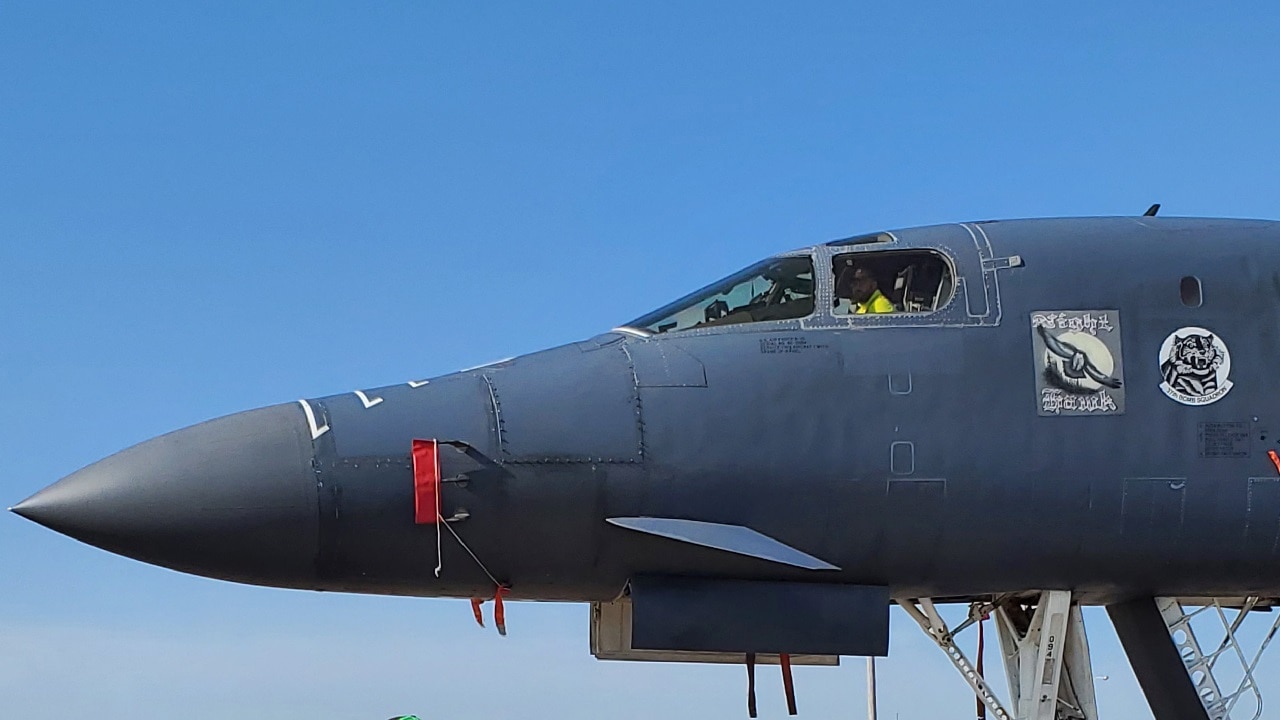The Old B-1B Bomber Might Have a New Trick: The Air Force’s B1-B bomber may capture fewer headlines than a sleek-looking, stealthy B-2 or well-known F-35, yet the decades-old bomber has performed a massive volume of missions in recent years.
The B-1, which had its combat debut in Operation Desert Fox in 1998, went to drop thousands of JDAMs during the multi-year wars in Iraq and Afghanistan.
The B-1 can hit speeds of MACH 1.25 at 40,000 feet and operates at a ceiling of 60,000 feet. It fires a wide range of bombs, including several JDAMs: GBU-31, GBU-38, and GBU-54. It also fires the small diameter bomb-GBU-39.
Therefore, despite its age, the B1-B has surged into current service as part of a key strategy to retain a viable and effective bomber fleet until larger numbers of the new B-21 arrive in the fleet.
This is why the Air Force has been pursuing a massive technical overhaul of the B1-B, giving the aircraft an expanded weapons ability along with new avionics, communications technology, and engines.
The engines have been refurbished in recent years to retain their original performance specs, and the B-1 has also been getting new targeting and intelligence systems. A new Integrated Battle Station includes new aircrew displays and communication links for in-flight data sharing.
Another upgrade called The Fully Integrated Targeting Pod connects the targeting pod control and video feed into B-1 cockpit displays.
The B-1 will also be able to increase its carriage capacity of 500-pound class weapons by 60 percent due to Bomb Rack Unit upgrades.
B1-B Weapons Bay Configured to Carry Hypersonic weapons
In recent years, the Air Force has also reconfigured the B-1B weapons bay to carry more weapons, increasing the B-1B’s magazine capacity from 24 weapons internally, all the way up to 40.
The adjustments to the bomb bay will also enable the B-1B to carry hypersonic weapons, something which greatly increases the aircraft’s lethality.
Accommodating larger hypersonic weapons into a B1 bomb bay brings a number of strategic implications; not only does it massively increase the target envelope and range but also allows for longer mission “dwell” time over targets to sustain attacks.
The timing of the demos is significant as well, given that it serves two key Air Force aims – accelerate hypersonic weapons to war and sustain and upgrade the B-1 to its maximum extent.
Integrating large hypersonics also works with the Air Force’s broader intent to quickly merge innovations from the science and technology realm into operational use.
A new science and technology Air Force strategy, released earlier this year, emphasizes greater synergy between scientifically-oriented weapons breakthroughs and “bending” metal on prototypes and systems in preparation for operational combat use.
MORE: The F-35 Now Comes in Beast Mode
MORE: Why the U.S. Navy Tried to Sink Their Own Aircraft Carrier
Kris Osborn is the Military Affairs Editor of 19FortyFive and President of Warrior Maven – Center for Military Modernization. Osborn previously served at the Pentagon as a Highly Qualified Expert with the Office of the Assistant Secretary of the Army—Acquisition, Logistics & Technology. Osborn has also worked as an anchor and on-air military specialist at national TV networks. He has appeared as a guest military expert on Fox News, MSNBC, The Military Channel, and The History Channel. He also has a Masters Degree in Comparative Literature from Columbia University.

